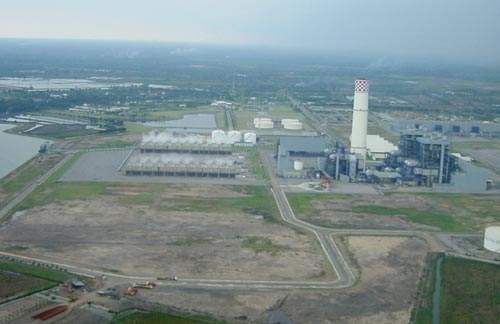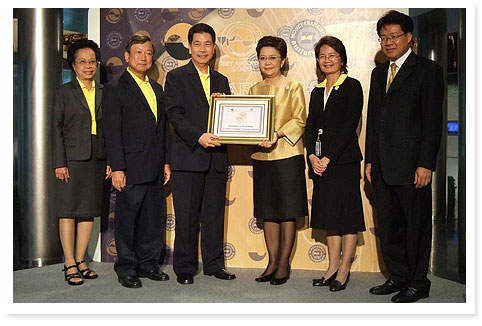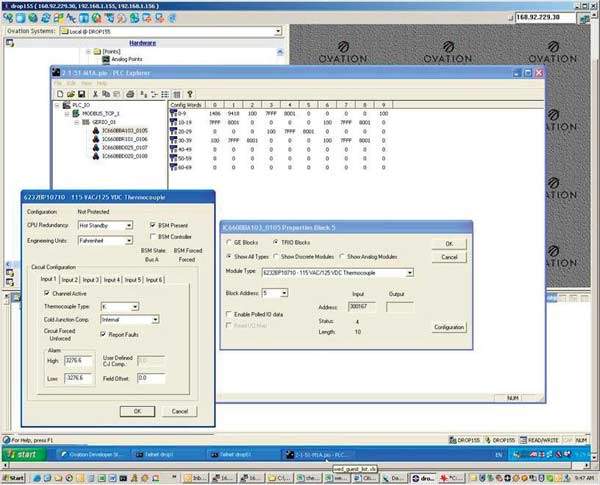Construction is underway on a new 1,400MW combined cycle unit at Ratchaburi, southwest of Bangkok, Thailand. The project adds to the existing Ratchaburi plant, already the largest in Thailand. The commercial operations of the first new 700MW unit began in March 2008, while the operations of Unit 2 began in June 2008.
The Ratchaburi project is owned by the Ratchaburi Electricity Generating Co. Ltd. (Ratchgen). The two existing plants supply a total of 3,645MW at Ratchaburi, located in 875 acres of the Navaratchaburirom Park by the Mae Klong River.
One plant has three 600MW combined-cycle units, and the other has two 700MW conventional dual oil and gas fuel thermal plants.
There is the option of burning natural gas, diesel and bunker oil, to avoid dependence solely on gas imported from the new Yadana gas field in Myanmar. Ratchaburi is EGAT’s (Electricity Generating Authority of Thailand) largest single investment.
Ratchaburi timescale and supply
The first gas turbine was finally started at the end of 1999, and another thermal unit in 2001. The plant was producing 2,125MW by 2002. The delayed start was attributed to late delivery of some GE equipment, and to incorrect specifications for the gas burner.
It is understood that the burners had to be modified to accommodate the lower than expected calorific value of the Yadana gas. The modifications were required to ensure good combustion efficiency and lower fuel consumption.
In 1998, EGAT temporarily transferred a gas turbine unit from the Lan Krabue Power Plant to Ratchaburi to help the Petroleum Authority of Thailand (PTT) avoid being fined by the Myanmar gas supplier.
The new units were originally planned for completion in 2001. In February 2004, Hongkong Electric Holdings Limited (HEH) announced that its wholly-owned subsidiary, Hongkong Electric International Limited (HEI), had finalised shareholding arrangements with five other shareholders for the 1,400MW expansion.
Emerson Process Management won a contract to install its PlantWebdigital plant architecture with Ovation expert control system and Foundation fieldbus at the Ratchaburi extension. Emerson’s system will monitor and control the heat recovery steam generators as well as balance of plant processes.
The Ovation system will also interface via TCP/IP to the MHI governor system, which controls the gas and steam turbines. Emerson’s equipment has a total of 13 redundant controllers, eight Ovation workstations, AMS(TM) Suite: Intelligent Device Manager and 40 Rosemount 848T intelligent temperature devices.
Electricity generated by the plant will be sold to the Electricity Generating Authority of Thailand under a 25-year Power Purchase Agreement. The Ratchaburi plant is well placed to supply the Bangkok area, which accounts for half of the country’s total electricity demand. It is situated 100km from Bangkok and is the main power plant on the western side of the country.
Power plants in the east are liable to transmission line congestion. Under the government’s new policy, this made Ratchaburi a prime candidate for privatisation, with an estimated selling price of 56,719m baht.
GE/Mitsui consortium won combined-cycle order
A GE/Mitsui consortium won the combined-cycle main equipment order, worth around $450m. Their lead subcontractor is Raytheon, which provided engineering services. Price was reportedly the key criterion. Rivals for the order were Mitsubishi Heavy Industries, Marubeni, Siemens and ABB.
GE supplied turbines and generators, while Mitsui managed procurement for supporting equipment. Mitsui also managed countertrade operations with its trading system.
Countertrade involves required purchases of Thai goods to lower the foreign exchange outflow for equipment. The order was a significant milestone for Mitsui, which has increased its commitment to the power sector outside Japan.
Mitsubishi Heavy Industries won the order for the conventional thermal plant, again on price. It supplied steam turbines, generators and other equipment for around $500m.
Rivals for the business were Mitsui, Siemens, ABB, Nichimen and Sumitomo. The Export-Import Bank of Japan (Jexim) guaranteed the foreign currency portion of the finance for the two Mitsubishi-supplied conventional thermal generators.
Stone & Webster provided design and oversight services for planning, procurement, and construction. Elsag Bailey supplied process control systems for all units. Its $20m contract included 70 operator stations, three engineering workstations, a strategic system to link plant and business information and two plant simulators. Korean group Kolon Engineering provided water treatment systems. The consortium of ABB Substations, AB and ABB T&D Ltd won the contract to supply and build a switchyard with 230 and 500kV capacity. Hitachi, and Sumitomo also won related 500kV transmission contracts.
Fuel for the Ratchaburi CCGT, and possibly for the conventional plant, comes from the Yadana gas field in the Andaman Sea off Myanmar, although both plants can also use oil. Energy groups Total of France and Unocal of the USA are partnering the Myanmar and Thai state oil groups in the construction of the offshore installations, and a 415-mile pipeline to transport gas to Ratchaburi.
Total lead investor
Total was the lead investor, with a 32% stake. It operates the Myanmar side of the pipeline. Unocal has 28%, Petroleum Authority of Thailand (PTT) 25%, and Myanmar Oil and Gas Enterprise 15%. The Myanmar side of the project cost an estimated $1bn or more. The Myanmar portion of the pipeline includes a 215-mile subsea section and a 39-mile onshore segment. The pipeline from the Thai border to Ratchaburi stretches 161 miles and is the responsibility of PTT, the gas purchaser.
Gas production
Gas production can be as high as 650 million ft³ per day and will last 30 years. Officially, Thailand takes 81% of the total, with Myanmar taking the remainder for new power and industrial projects.
Total and its partners are actively developing fields adjacent to Yadana. In August 1999, the Ratchaburi power plant began to receive 55 million ft³ per day of the expected maximum 325 million ft³ per day gas supply from the Yadana field to run the first turbine.
Thai electricity industry
As part of its conditions, the International Monetary Fund (IMF) called for the complete restructuring of Thailand’s electricity industry. EGAT was ordered to sell all its power stations except hydroelectric plant.
A private company, Electricity Generating plc (Egco), was chosen to operate two gas-fired power stations totalling 2,100MW. EGAT continues to own and operate Thailand’s national power transmission system, and buys electricity from privatised and new private producers to supply to distributors and large customers.
Gas-fired stations account for about half Thailand’s installed generating capacity, and oil-fired power plants account for a further 20%. The kingdom’s remaining power capacity is provided by various hydroelectric and lignite-fired schemes.






